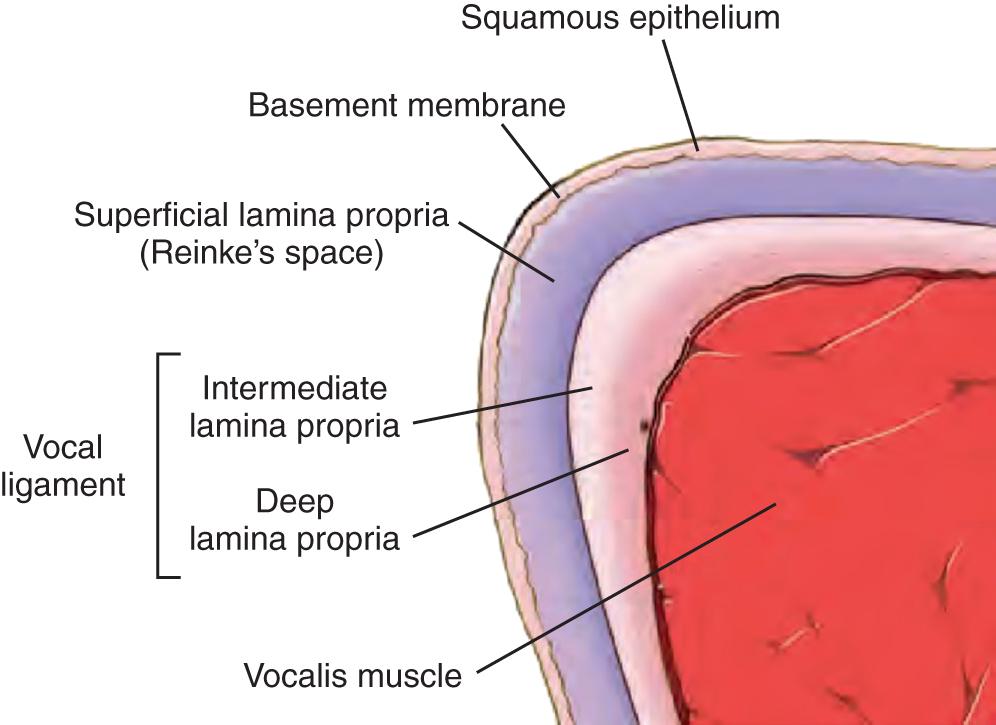Physical Address
304 North Cardinal St.
Dorchester Center, MA 02124
Phonomicrosurgery is usually reserved for patients who have attempted and failed nonsurgical management, except in cases of very large or suspicious appearing vocal fold lesions.
Videolaryngostroboscopy should be performed during the evaluation of a vocal fold lesion to assess mucosal vibratory properties and glottic closure.
Many vocal fold lesions caused by excessive phonotrauma recur if the underlying vocal behavior is not corrected.
The primary management of vocal fold nodules is voice therapy.
To achieve the best voice outcome after phonomicrosurgery, the depth of dissection should be limited to the superficial lamina propria.
The term “phonosurgery” was introduced in 1963 to describe procedures that alter vocal quality and pitch. As technology and understanding of the delicate vocal fold anatomy advanced, the term “phonomicrosurgery” became popular. It is usually performed using very fine instruments aided by a high-powered microscope to remove the vocal fold lesion and maximize the preservation of normal vocal fold tissue.
The most common indication for phonomicrosurgery is for the removal of benign laryngeal lesions to restore the normal prephonatory glottic configuration of the larynx. Occasionally, it can be used to resect precancerous and early cancers of the glottis.
Vocal fold stripping is usually performed by grabbing the lesion with a cup forceps and “tearing” it off the vocal fold. There is no fine control of the depth with vocal fold stripping. Furthermore the lack of precision may result in excessive removal of normal tissue or incomplete resection of diseased tissue. Stripping is no longer considered the standard of care for the majority of vocal fold lesions.
Stratified squamous epithelium, basement membrane, superficial lamina propria (SLP), vocal ligament (intermediate and deep lamina propria), and vocalis muscle (see Fig. 77.1 ).

Fibroblasts constitute the main cellular component of the lamina propria, while glycosaminoglycans and proteoglycans occupy the interstitial spaces within the extracellular matrix.
The superficial lamina propria has often been described incorrectly as a potential space. It is approximately 0.5 millimeters in thickness and has a distinct anatomic structure. Thus the eponym of Reinke’s space is a misnomer.
It is composed mostly of extracellular matrix proteins, water, and loosely arranged fibers of collagen and elastin. SLP is mostly gelatinous.
It is composed mostly of elastin and collagen. As the vocal ligament transitions from the intermediate to the deep layer of the lamina propria, there is a denser arrangement of collagen. Elastin facilitates tissue stretching, whereas collagen provides connective strength.
Due to different physical properties, the cover (epithelium and the SLP) vibrates differently from the body (vocal ligament and vocalis muscle). Some authors consider the vocal ligament to be a transitional zone without discrete boundaries between layers. As air passes between the vocal folds from the lung, the cover moves like a wave over the denser vocal ligament and vocalis muscle.
Become a Clinical Tree membership for Full access and enjoy Unlimited articles
If you are a member. Log in here